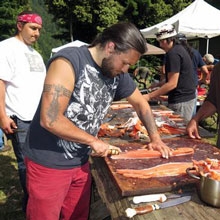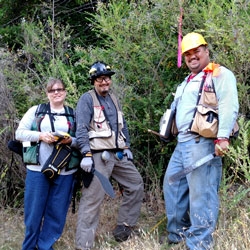
Bear Culver (Cherokee Nation)
Historically the Yurok tribe used fire as a management tool for suppressing unwanted growth in prairies, and for promoting the growth of vegetation they depended on for food as well as material resources. This also provided nutritious forage and habitat for Black-tailed deer (Odocoileus hemionus columbianus), which is especially critical for young deer. Due to the fire suppression regime of the U.S Government in the early 1900’s, the once vast prairie systems on Yurok tribal lands have become encroached upon by invading species such as Douglas fir (Pseudotsuga menziesii) and Himalayan Blackberry (Rubus armeniacus). The aim of this study is to confirm or deny the relevance of open prairie systems with respect to wildlife, specifically black-tailed deer. We hypothesized that the fire suppression of prairies would influence the presence and activity of black-tailed deer and other native fauna, predicting that black-tailed deer and other wildlife would have a higher frequency of detection in open prairies than in encroached upon prairies. Data was gathered on Yurok tribal lands using 21 camera traps across 7 sites and 3 habitats- taking note of the scat, browse, and encroachment levels along game trails. A total of 209 detections of wildlife were recorded from the cameras; 68 detections in the open prairies, 56 detections in the encroached areas, and 85 detections in the historically forested areas. Black-tailed deer had a higher frequency of detection in the open prairies than in any other habitat, supported by a chi-squared test of the composition of species across habitat. Black-tailed deer scat also had the highest observed levels in the open prairies. Black bear (Ursus americanus) and other carnivores did not favor any one habitat, and small mammals had a higher frequency of detection in the historically forested areas. The level and type of encroachment seems to influence the presence of wildlife, but more data will be needed to understand this relationship. This study can provide an introduction into the trends of wildlife of fire-suppressed prairies. The reintroduction of fire management to these prairie systems would provide advantageous habitat to black-tailed deer and promote the growth of traditional plants, all of which is culturally important to the Yurok tribe.







